With only hours to spare, the US organizers of the Middle East conference opening in Annapolis last Tuesday decided to make the best of a forlorn event by switching its key motive, from the intractable Israeli-Palestinian dispute to Iran – and its multiple threats to the Middle East. President Bush and Secretary Rice hoped to form a united Arab front against Ahmadinejad’s Iran. But as it soon turned out, this endeavor will be a daunting task in view of at least two obstacles: King Abdullah of Saudi Arabia no longer seems to recognize the US as the single dominant political and military force in the Persian Gulf; and Syrian participation – albeit at the low level of deputy foreign minister, was hardly a convincing indication, that Damascus was considering a drastic change from its strategic link with Tehran. The first alarm bell announcing that not much has changed sounded only hours after the distinguished Annapolis guests left for their capitals with grave doubts over its sobering outcome.
In Annapolis, while Bush, Abbas and Olmert were still basking in the sunlight of illusory expectations, Saudi foreign minister Saud al-Faisal and Syrian deputy foreign minister Faisal Mekdad were quietly finalizing a deal over Lebanon – kept secret from the US President, who was fully engaged with the Israeli-Palestinians peace process. Bush and Rice, by inviting Syria to the Annapolis, indeed exceptional, over Washington’s persistent refusals, had intended to buy Damascus off from installing another pro-Syrian puppet candidate into Beirut’s Ba’abda presidential palace. Unfortunately, the Syrian-Saudi secret tête-à-tête move, quite a surprising move by two les ser friendly nations, based on Syria’s staunch adherence to Saudi’s Sunni rival in Tehran, resulted in getting the 59 year General Michel Suleiman elected as the next Lebanese president. The general, known as pro-Syrian was ‘catapulted’ into commanding the Lebanese Army in 1999, when Lebanon was still very much ‘owned’ by Damascus. After all that Washington and had Paris invested in preventing such a dangerous move in Beirut, Suleiman’s election, if it goes ahead by next week, will be a visible slap in the face of President Bush’s losing his grip on the real makings in the Middle East and not the make-believe ‘dreamworld’ of a Olmert-Abbas peace deal, which will never really work out.
ser friendly nations, based on Syria’s staunch adherence to Saudi’s Sunni rival in Tehran, resulted in getting the 59 year General Michel Suleiman elected as the next Lebanese president. The general, known as pro-Syrian was ‘catapulted’ into commanding the Lebanese Army in 1999, when Lebanon was still very much ‘owned’ by Damascus. After all that Washington and had Paris invested in preventing such a dangerous move in Beirut, Suleiman’s election, if it goes ahead by next week, will be a visible slap in the face of President Bush’s losing his grip on the real makings in the Middle East and not the make-believe ‘dreamworld’ of a Olmert-Abbas peace deal, which will never really work out.
But that is not all: On December 3, only five days after the Annapolis conference, five Persian Gulf oil states were scheduled to meet discussing critical points in their common relations with Washington. One is whether to continue to keep oil prices linked to the fast-sinking US dollar or adopt a currency basket.
Such talk in the Persian Gulf must indicate clear signs of waning American influence in this strategic Gulf region. In fact, painfully aware of this trend, President Bush had already decided to take advantage of the broad Arab presence at Annapolis to initiate attempt in turning the tide and cut US losses against Iran influence in the region. But, having almost criminally ignored Russia’s intentions in that very region, matters could be sliding too fast for a radical remedy, depending last minute energic steps to be taken, without delay by Washington. Here are a few examples of Moscow’s latest activities in the strategic Persian Gulf region.
 An important event, which was surprisingly ignored by the media, happened in Moscow just shortly before the Annapolis fiasco. Saudi Crown Prince Sultan bin Abdulaziz Al Saud, Deputy Premier, Minister of Defense and Aviation and Inspector General, paid a three-day official visit to Federal Republic of Russia. Prince Sultan held talks with President Vladimir Putin at the Kremlin. Both emphasized the importance of strengthening Saudi-Russian relations in all areas and enhancing coordination to protect mutual interests. The Sultan highlighted the distinguished relations between the two countries. He also commended Russia’s positive stance toward regional and international issues. According to diplomatic sources in Riyadh, the two countries were to reach a “framework agreement for military cooperation” that would open the way for Saudi Arabia to buy Russian arms. Following high-level meetings in Moscow, a large arms transaction with Russia should tightened bilateral relations between Russia and Saudi Arabia. The Sultan’s statements during the visit were a quite spectacular. For the first time, a senior Saudi official called for cooperation between Riyadh and Moscow to halt, what he called the “crazy, illogical and disproportionate” slaughter in Iraq. No one could be happier over such words from a high profile Arab visitor, than Vladimir Vladimirovich Putin. Indeed, as unbelievably as it may sound to American ears, at the time already fully engaged in welcoming Abdulaziz’s collegue, Foreign Minister Saud al-Faisal in Annapolis, these were the strongest words condemning US actions in the Middle East since King Abdullah referred to America’s “occupation” of Iraq at the Riyadh conference of March 2007.
An important event, which was surprisingly ignored by the media, happened in Moscow just shortly before the Annapolis fiasco. Saudi Crown Prince Sultan bin Abdulaziz Al Saud, Deputy Premier, Minister of Defense and Aviation and Inspector General, paid a three-day official visit to Federal Republic of Russia. Prince Sultan held talks with President Vladimir Putin at the Kremlin. Both emphasized the importance of strengthening Saudi-Russian relations in all areas and enhancing coordination to protect mutual interests. The Sultan highlighted the distinguished relations between the two countries. He also commended Russia’s positive stance toward regional and international issues. According to diplomatic sources in Riyadh, the two countries were to reach a “framework agreement for military cooperation” that would open the way for Saudi Arabia to buy Russian arms. Following high-level meetings in Moscow, a large arms transaction with Russia should tightened bilateral relations between Russia and Saudi Arabia. The Sultan’s statements during the visit were a quite spectacular. For the first time, a senior Saudi official called for cooperation between Riyadh and Moscow to halt, what he called the “crazy, illogical and disproportionate” slaughter in Iraq. No one could be happier over such words from a high profile Arab visitor, than Vladimir Vladimirovich Putin. Indeed, as unbelievably as it may sound to American ears, at the time already fully engaged in welcoming Abdulaziz’s collegue, Foreign Minister Saud al-Faisal in Annapolis, these were the strongest words condemning US actions in the Middle East since King Abdullah referred to America’s “occupation” of Iraq at the Riyadh conference of March 2007.
Last February, President of Russia Vladimir Putin paid his historic visit to Saudi Arabia, the first trip by a Russian leader to the Sunni Arab kingdom, to discuss energy projects and the situation in the Middle East. Speaking after Putin’s visit to Riyadh, Foreign Minister Prince Saud Al-Faisal said that the Kingdom was in talks with Russia over the possible purchase of Russian weapons. Surprisingly, the final communiqué issued after Sultan’s visit did not mention anything about an arms deal. However an official source, who requested anonymity, said Sultan’s talks with Putin would lead to an understanding on the sale of about 150 Russian T-90 battle tanks to the Kingdom. The source said tests were carried out on the T-90 in Saudi Arabia last year to determine the tank’s suitability for harsh desert conditions, and Russia is also looking to sell Mi-17 helicopters. It is well known, that Saudi Arabia has been a traditional buyer of US and other western military equipment but has recently signaled that it may be considering diversifying its arsenal.
Whether by coincidence, or strategic planning, Washington retaliated quickly last July, proposing a mammoth arms sale package to the Persian Gulf states and primarily Saudi Arabia. Surpassing some 20 billion US dollars in value, the proposed package could include satellite-guided bombs, upgrades to first-line fighter aircraft and new naval vessels. But, as usual, under the already prevailing pre-election environment Washington administration officials remained concerned that the size of the package and the advanced weaponry it contains, as well as broader concerns about Saudi Arabia’s role in Iraq, could prompt Saudi critics in Congress to oppose the package when Congress is formally notified about the deal. Such quite natural democratic hesitations could well pave the way for Moscow’s arms deal.
Russian Strategic Ambitions in the Persian Gulf
Several factors account for a recent growth in Russia’s assertive policy in the Persian Gulf. One has to do with Moscow’s and primarily President Putin’s reestablishment of Russia as a great power. Another issue directly affects Russian stability and security; the Arab Middle East which is closely linked with ex-Soviet Muslim nations in central Asia and the Caucasus. Nevertheless, it seems clearly, that Putin’s overall strategic aim is to challenge the predominant U.S. security position in the Gulf, which in the pre-Iraq occupation fiasco era, was totally unthinkable.
But there were already first signs of change in Moscow’s feelers to this region, when following Operation Desert Storm, then Russian Prime Minister Chernomyrdin toured Saudi Arabia, Kuwait, the United Arab Emirates (UAE), and Oman in November 1994. Being the first visit by a Russian prime minister to an Arab state Moscow it already had far- sighted goals. It was an invitation to long-term cooperation and to positions more appreciative of the Russian market and its export capabilities. Nevertheless, the time was not right and not much was achieved until Putin’s muscle-flexing speech at the 43rd Munich Conference on Security Policy on February 2007. Normally any speech by a Russian high-profile personality is listened to very carefully, by Western politicians and Putin’s out-right challenge was no exception. The carefully phrased rhetoric did not break new ground; indeed, it only repeated things that the Russians have been saying for quite a while. But the venue in which it was delivered, the timing and the confidence with which it was asserted, signified Moscow’s new strategic direction. While the Cold War had not returned, Russia now officially asserted itself as a great power, and started behaving accordingly. The Russians are arguing that the uni-polar world is becoming unacceptable and President Putin now clearly intends to escalate the confrontations with the United States along key focal points, mainly in the strategic Middle East, which has for decades been under Washington’s full patronage. Putin believes that, due to America’s involvement in the deep Iraq insurgency quagmire, the time is right to challenge the Middle East Muslim arena, which is the pressure point to which the United States is most sensitive.
The primary goal, though not the only one, are Russian energy interests in Middle East. Russia is not only a major exporter of energy supplies, it is currently the world’s top oil producer. The Russians have a need to maintain robust energy prices, and working with the Iranians and Saudis in some way to achieve would be directly in line with Moscow’s interest. Putin knows perfectly well how vitally important a geo-strategic commodity energy is. Energy supply issues have become a primordial part of international economic policy today. Not surprisingly then, Putin selected Russia’s extensive oil and gas resources and pipelines, as well as national champion companies, as the key policy instruments in playing a ruthless chess game in world energy geopolitics. And the figures are impressive. As far as natural resources are concerned, Russia’s position is extremely strong: holding 6.6 percent of the world’s proven oil reserves and 26 percent of the world’s gas reserves, it currently accounts for 12 percent of world oil and 21 of recent world gas production. According to 2007, statistics, Russia was the world’s largest oil and gas producer. Under these conditions, it would seem only natural that with energy demand constantly on the rise, Russia wants to use its position as a major energy producer of both oil and gas in order to regain geopolitical significance. And gaining a strong foothold in Middle-East politics, Saudi Arabia and the Gulf states, could well become a prime objectives for Moscow’s new global ambitions.
Moscow clearly realizes that the two main Islamic powers between the Levant and the Hindu-Kush are Saudi Arabia and Iran. The Russians have things they very would much like from each of these, but Saudis and Iranians have different strategic and religious interests at stake. Saudi Arabia — an Arab and predominantly Sunni kingdom — is very rich but militarily relatively weak. Iran — the largest Persian Shiite power — is not nearly as rich as Saudi Arabia but militarily very powerful, with nuclear ambitions making it a strategic contender for Gulf domination. Moreover, there exists a tremendous geopolitical asymmetry between Saudi Arabia and Iran. Riyadh’s Saudi princes are extremely concerned with Tehran’s Shi’ite clerics’ strategic ambitions would very much like to limit these into acceptable proportions. For this aim, the Saudis however need foreign power assistance- primarily American, at least sofar. This creates internal unrest which places the Saudi Royalty in severe dilemma. Dependence on US military power to keep Iran within bounds, conflicts with internal interest to deny, or at least, limit foreign military presence in the country. The other dilemma which can also affect Russian interests is the oil price. Encouraging high oil price tags, may be of local interest to fill the already packed Saudi coffers, but at the same time strengthen Iran, while efforts to lower these, could affect Russian aspirations, oil being Moscow’s major financial income asset.
But Russia also has dilemmas, when dealing in Middle-Eastern politics. Russia does not wish to see the Islamic fundamentalist clerics in Tehran becoming a dominant strategic power in the oil-rich Persian Gulf region. In this they might even share Washington’s strategic interests. But the Russians do want to use Iran, within certain manageable proportions, which makes Moscow’s own position an extremely complex one. As the old saying goes: “the Middle East is a graveyard of ambitions”.
One highly controversial aspect of Russian’s Persian Gulf involvement concerns helping Riyadh and other Middle-East nations with nuclear power development was discussed during the meeting. All major regional players in the Middle East appear eager to gain nuclear energy capabilities, probably to counter Iran’s nuclear ambitions. For example, Putin, in a recent trip to Egypt, offered Russian nuclear knowledge to Cairo. Putin’s latest activism in the nuclear diplomatic power game within the Middle East is not only highly dangerous, but must be extremely challenging to Israel and the United States of America. On the one hand, it is Moscow’s ideal instrument for gaining influence over the regional dynamics; this is in fact the Russian strategy toward Iran. It is possible that Moscow does not really want a nuclear Iran close to it’s border region and because relations between the two countries are complex and often disturbed by diverging interests, especially in the Caspian sea, they are approaching this issue with extreme caution. Therefore, Russian support for Iran on the nuclear issue is instrumental, actually representing a rather shrewd approach, trying at the same time to limit Iran’s strategic independence.
Despite all recent endeavors by Moscow to assert its strategic presence in the Persian Gulf and the Middle East as such, the undeniable fact remains, at least for the foreseeable future, that the United States is still the prominent power in the region. It will be extremely difficult for Moscow to replace Washington’s role as the main ally of major Middle East nations. Although Moscow is attempting such a move, it seems realistic, that as long as the United States remains the hegemonic power in the region, maintaining its overwhelming military presence in the Gulf, it will be extremely difficult to implement its aspirations.

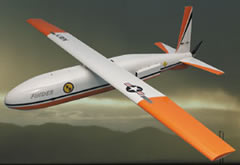

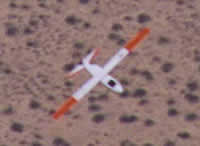
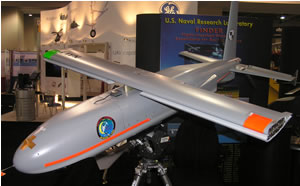

 ser friendly nations, based on Syria’s staunch adherence to Saudi’s Sunni rival in Tehran, resulted in getting the 59 year General Michel Suleiman elected as the next Lebanese president. The general, known as pro-Syrian was ‘catapulted’ into commanding the Lebanese Army in 1999, when Lebanon was still very much ‘owned’ by Damascus. After all that Washington and had Paris invested in preventing such a dangerous move in Beirut, Suleiman’s election, if it goes ahead by next week, will be a visible slap in the face of President Bush’s losing his grip on the real makings in the Middle East and not the make-believe ‘dreamworld’ of a Olmert-Abbas peace deal, which will never really work out.
ser friendly nations, based on Syria’s staunch adherence to Saudi’s Sunni rival in Tehran, resulted in getting the 59 year General Michel Suleiman elected as the next Lebanese president. The general, known as pro-Syrian was ‘catapulted’ into commanding the Lebanese Army in 1999, when Lebanon was still very much ‘owned’ by Damascus. After all that Washington and had Paris invested in preventing such a dangerous move in Beirut, Suleiman’s election, if it goes ahead by next week, will be a visible slap in the face of President Bush’s losing his grip on the real makings in the Middle East and not the make-believe ‘dreamworld’ of a Olmert-Abbas peace deal, which will never really work out. An important event, which was surprisingly ignored by the media, happened in Moscow just shortly before the Annapolis fiasco. Saudi Crown Prince Sultan bin Abdulaziz Al Saud, Deputy Premier, Minister of Defense and Aviation and Inspector General, paid a three-day official visit to Federal Republic of Russia. Prince Sultan held talks with President Vladimir Putin at the Kremlin. Both emphasized the importance of strengthening Saudi-Russian relations in all areas and enhancing coordination to protect mutual interests. The Sultan highlighted the distinguished relations between the two countries. He also commended Russia’s positive stance toward regional and international issues. According to diplomatic sources in Riyadh, the two countries were to reach a “framework agreement for military cooperation” that would open the way for Saudi Arabia to buy Russian arms. Following high-level meetings in Moscow, a large arms transaction with Russia should tightened bilateral relations between Russia and Saudi Arabia. The Sultan’s statements during the visit were a quite spectacular. For the first time, a senior Saudi official called for cooperation between Riyadh and Moscow to halt, what he called the “crazy, illogical and disproportionate” slaughter in Iraq. No one could be happier over such words from a high profile Arab visitor, than Vladimir Vladimirovich Putin. Indeed, as unbelievably as it may sound to American ears, at the time already fully engaged in welcoming Abdulaziz’s collegue, Foreign Minister Saud al-Faisal in Annapolis, these were the strongest words condemning US actions in the Middle East since King Abdullah referred to America’s “occupation” of Iraq at the Riyadh conference of March 2007.
An important event, which was surprisingly ignored by the media, happened in Moscow just shortly before the Annapolis fiasco. Saudi Crown Prince Sultan bin Abdulaziz Al Saud, Deputy Premier, Minister of Defense and Aviation and Inspector General, paid a three-day official visit to Federal Republic of Russia. Prince Sultan held talks with President Vladimir Putin at the Kremlin. Both emphasized the importance of strengthening Saudi-Russian relations in all areas and enhancing coordination to protect mutual interests. The Sultan highlighted the distinguished relations between the two countries. He also commended Russia’s positive stance toward regional and international issues. According to diplomatic sources in Riyadh, the two countries were to reach a “framework agreement for military cooperation” that would open the way for Saudi Arabia to buy Russian arms. Following high-level meetings in Moscow, a large arms transaction with Russia should tightened bilateral relations between Russia and Saudi Arabia. The Sultan’s statements during the visit were a quite spectacular. For the first time, a senior Saudi official called for cooperation between Riyadh and Moscow to halt, what he called the “crazy, illogical and disproportionate” slaughter in Iraq. No one could be happier over such words from a high profile Arab visitor, than Vladimir Vladimirovich Putin. Indeed, as unbelievably as it may sound to American ears, at the time already fully engaged in welcoming Abdulaziz’s collegue, Foreign Minister Saud al-Faisal in Annapolis, these were the strongest words condemning US actions in the Middle East since King Abdullah referred to America’s “occupation” of Iraq at the Riyadh conference of March 2007.
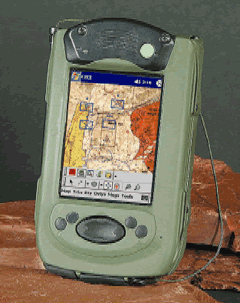
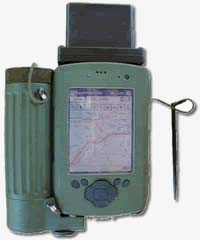
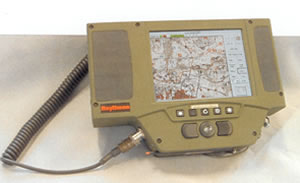
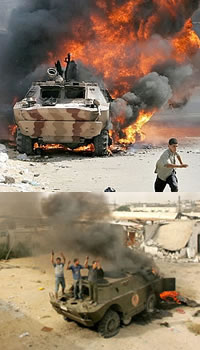
 Sofar, what prevented this from happening is the presence of the IDF in most of the Palestinian townships, which otherwise would long have joined Hamas. Israeli defense analysts have already warned of allowing any concessions that PM Olmert has in mind, for example, handing over security to Abu Mazen’s security forces in dangerous West Bank focal towns. First such concessions, allowing Fatah police into Nablus have already demonstrated their inability to restore even public order against the local warlord domination. Olmert’s latest “gift” of 50 Russian BRDM-2 armored cars with 14,5mm turret mounted heavy machine guns, is another of those futile gestures, which could endanger low flying helicopters supporting counter-terror operations in the West bank Hamas hideouts. In Gaza, Hamas took charge of similar cars, provided with US assistance, but within hours, with nearly a shot fired by Fatah security forces- ten times Hamas strength these became coveted weapons for Hamas. A similar situation could happen in the West Bank- as all these weapons fall into Hamas hands- and then what?
Sofar, what prevented this from happening is the presence of the IDF in most of the Palestinian townships, which otherwise would long have joined Hamas. Israeli defense analysts have already warned of allowing any concessions that PM Olmert has in mind, for example, handing over security to Abu Mazen’s security forces in dangerous West Bank focal towns. First such concessions, allowing Fatah police into Nablus have already demonstrated their inability to restore even public order against the local warlord domination. Olmert’s latest “gift” of 50 Russian BRDM-2 armored cars with 14,5mm turret mounted heavy machine guns, is another of those futile gestures, which could endanger low flying helicopters supporting counter-terror operations in the West bank Hamas hideouts. In Gaza, Hamas took charge of similar cars, provided with US assistance, but within hours, with nearly a shot fired by Fatah security forces- ten times Hamas strength these became coveted weapons for Hamas. A similar situation could happen in the West Bank- as all these weapons fall into Hamas hands- and then what?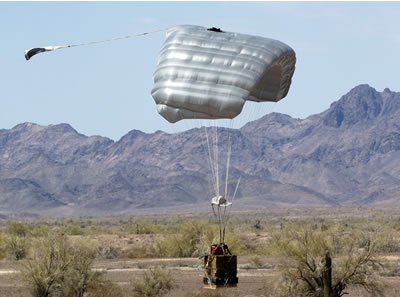
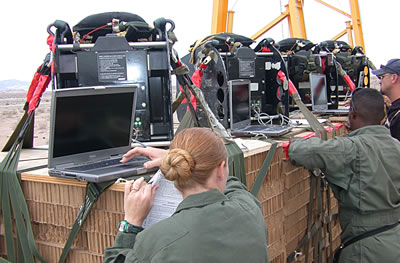
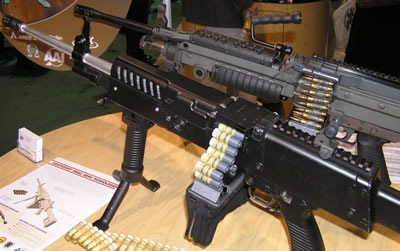
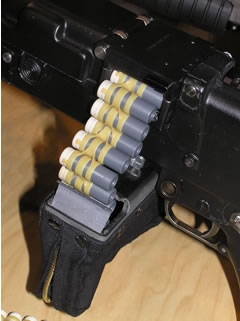

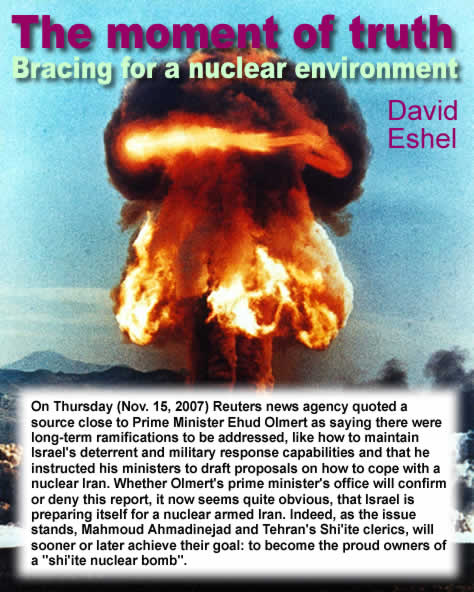


 Whether Israel, or in fact, any other well armed and prepared nation facing a nuclear threat should however tremble with fear from such a horrible doomsday weapon remains debatable, if the facts be carefully examined and assessed.
Whether Israel, or in fact, any other well armed and prepared nation facing a nuclear threat should however tremble with fear from such a horrible doomsday weapon remains debatable, if the facts be carefully examined and assessed.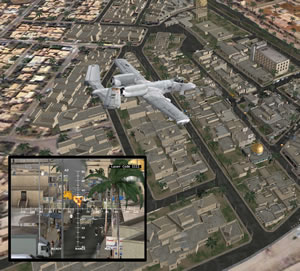
 An ongoing program designed to improve piloting skills of army aviators, is AVCATT, built by Link Simulation & Training. The system provides a virtual multiple training positions networked in a ‘multiplayer war-game’ like simulator providing an interactive, networked environment to support individual, crew, collective and combined arms training. The system is based on virtual, realistic training environment supported by intelligent, semi-automated forces (SAF). Following the simulated battle exercise, aircrews can review and analyze their mission performance through an After Action Review debriefing process. The system uses reconfigurable simulators supporting a full mission spectrum undertaken by the services’ attack, reconnaissance and utility helicopters, simulating AH-64A Apache, OH-58D Kiowa Warrior, UH-60 Blackhawk, CH-47D Chinook and AH-64D Longbow platforms.
An ongoing program designed to improve piloting skills of army aviators, is AVCATT, built by Link Simulation & Training. The system provides a virtual multiple training positions networked in a ‘multiplayer war-game’ like simulator providing an interactive, networked environment to support individual, crew, collective and combined arms training. The system is based on virtual, realistic training environment supported by intelligent, semi-automated forces (SAF). Following the simulated battle exercise, aircrews can review and analyze their mission performance through an After Action Review debriefing process. The system uses reconfigurable simulators supporting a full mission spectrum undertaken by the services’ attack, reconnaissance and utility helicopters, simulating AH-64A Apache, OH-58D Kiowa Warrior, UH-60 Blackhawk, CH-47D Chinook and AH-64D Longbow platforms. The soaring cost of flight simulators drove system developers to seek alternative display systems that could minimize the space and lower the cost of flight training. One of the latest innovations from Link is the new Advanced Helmet Mounted Display, delivering a 360° field-of-regard to support virtual training and augmented operational reality. The helmet mounted display uses new optics and illumination design, employing solid-state near-eye micro displays, enabling AHMD to provide unmatched contrast, brightness and vivid color for all types of imagery. The system can be coupled with Link’s Night Vision Training System assisting pilots to practice the challenging limitations of development of situational picture using ANVISS night vision goggles. Link’s integrated product solution couples the image generation system, NVG sensor simulation, head tracking, NVG goggle displays and correlated databases to provide the answer to realistic NVG simulation.
The soaring cost of flight simulators drove system developers to seek alternative display systems that could minimize the space and lower the cost of flight training. One of the latest innovations from Link is the new Advanced Helmet Mounted Display, delivering a 360° field-of-regard to support virtual training and augmented operational reality. The helmet mounted display uses new optics and illumination design, employing solid-state near-eye micro displays, enabling AHMD to provide unmatched contrast, brightness and vivid color for all types of imagery. The system can be coupled with Link’s Night Vision Training System assisting pilots to practice the challenging limitations of development of situational picture using ANVISS night vision goggles. Link’s integrated product solution couples the image generation system, NVG sensor simulation, head tracking, NVG goggle displays and correlated databases to provide the answer to realistic NVG simulation.
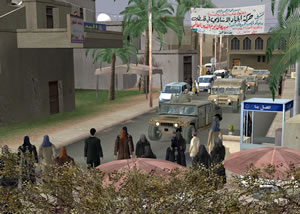


 Interacting with such ‘smart entities’, warfighters can utilize immersive displays, applying the new ExpeditionDI Un-Tethered, Man-Wearable Immersive Training (MWIT) Platform currently available from
Interacting with such ‘smart entities’, warfighters can utilize immersive displays, applying the new ExpeditionDI Un-Tethered, Man-Wearable Immersive Training (MWIT) Platform currently available from 











